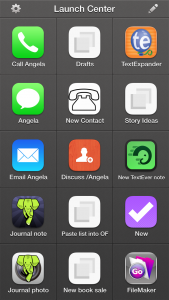Firefox works on everything. When it came out, it made Internet Explorer look embarrassing. (More embarrassing.) Firefox was the darling of every serious technology-minded geezer because it worked better, it worked faster.
I just didn’t like it.
It’s a funny thing. I like Safari and I swear to you that it feels light, that it feels like you just get on with things instead of having chunky buttons and options to slog through. What’s funny is that this is precisely, to the letter, what fans of Firefox say is wrong with Safari.
So, plainly, your choice of browser is surprisingly personal. (As long as it isn’t Internet Explorer. You can go too far.)
I’ve always kept a copy of Firefox around because there is often a site that just doesn’t work in Safari – or doesn’t work in Firefox, I don’t know why I keep finding picky websites. Each time I start up Firefox it irritates me by feeling heavy, kludgy and for CONSTANTLY telling me it is updating itself. I just want to go to a site. I want to go once, I want to go now, I want to get the hell out of Dodge and go back to Safari but, no. UPDATING.
It’s been worse since 2011 when the company announced it was going to update every six weeks or so. I applaud them for not doing the dots: Safari is currently on version 7.0.3. But at first it was wearisome seeing an entirely new version of Firefox coming down the chute: version 6, version 7, version 8… and on and on. I’m sure the developers intend this to seem like they are truly on the ball, at the cutting edge, bringing us the latest technology faster than anyone else. Version 9, version 10, version 11… I just think “Again?” or often “Already?”
My current copy of Firefox is version 26 and it is practically prehistoric: apparently I downloaded it on 14 March, a whole 47 days ago. I don’t even remember using it 47 days ago but I imagine I did and that it updated itself. Hang on. Yep, I’ve just opened it and it’s just updated itself.
To version 27.
I have no clue why it isn’t 29. I do have a clue that I could, with a wee bit of effort, go off now to already get versions 30 or even 31 in beta.
You can tell I’m not going to. But many will and they have very good reasons to find that version 29 is a great one. It’s very customisable, it’s got oodles of features. Hear what from someone who is far more of a fan than I am:
And then read more plus get a download at the official site.


